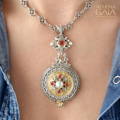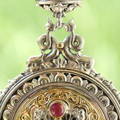+1 (862) 222-0442 (EST)
Dolphins in Ancient Art
A symbol of protection, love, and playfulness by Maria Evangelatou
Dolphins in Ancient Art
A symbol of protection, love, and playfulness
by Maria Evangelatou
One of the most memorable experiences a modern-day traveler to the Aegean may have is an encounter with playful dolphins jumping alongside or in front of a ship. In ancient times, such an event was considered a good omen for a safe journey.
The very origins of the word “dolphin” in ancient Greek, indicate respect, admiration, and affection for this graceful creature. The word delphis (dolphin) relates to the word delphys (womb), emphasizing the fact that this marine animal is a mammal. The word for sibling derives from the same root as delphys. The words adelphos (brother) and adelphe (sister) literally mean those who have shared the same womb, even the American city Philadelphia translates as "brotherly love". So the Greek word for dolphin ultimately emphasizes a special bond between these marine creatures and humans.
Dolphins are featured in Greek myths offering protection to people in distress. The most famous such case is the story of the poet and musician Arion. When threatened by pirates, Arion played his lyre and sung a hymn in honor of Apollo, the god of music, attracting one or more dolphins around the boat. Once he jumped in the water, one of those dolphins carried him safely ashore (fig. 1).

1. Floor mosaic - Villa Romana del Casale, Piazza Armerina, Sicily, 4th c. AC.
The stylized body of the dolphin with the long winding tale seen in Villa Romano (fig. 1) is common in Greco-Roman images and has inspired the dolphins of Spiros Gerochristo's Mediterranean enhancer.
In Arion’s story, the interest of dolphins in music (an activity the ancient Greeks considered an expression of high culture) could indicate the dolphins’ intelligence but could also be associated with their own ability to vocalize and produce whistling sounds with musical effect.
Other Greek myths of shipwrecked individuals saved by dolphins attest to their popularity as auspicious, protective animals and bringers of good fortune.
(Fig. 2) Silver coin of the Greek city of Taras (modern Taranto in South Italy) with depictions of dolphins on both sides, 3rd c. BC. According to tradition, the mythical founder of the city was Taras, son of the sea god Poseidon. Taras was saved from a shipwreck and brought to the shores of the city’s future location on the back of a dolphin.

He is depicted on one side of the coin riding his savior, above his name (Taras) and next to the trident, symbol of his father Poseidon. The other side of the coin depicts a riding warrior with a dolphin on his shield. The protective power of the shield is amplified here by the protective symbolism of the dolphin.
In Greco-Roman art and myths, dolphins often accompanied the god of the sea Poseidon (Roman Neptune) and could be his messengers.
According to one ancient source, a dolphin acted as matchmaker between Poseidon and the sea nymph Amphitrite, convincing the goddess to marry the master of the sea. To reward the dolphin, Poseidon turned it into the constellation Delphinus. This story and other evidence suggest that in Greco-Roman tradition dolphins may have had a close association with love and romance.
They often appeared carrying Aphrodite the goddess of love, beauty, and sexuality, who according to one version of her genealogy was born from the sea (fig. 4). Aphrodite’s son, the god of passion and desire Eros (Roman Cupid) was often depicted riding a dolphin (figs. 4&5).
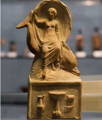
3. Aphrodite rides a dolphin

4. Her son Eros holds a mirror

5. The floor mosaic from the House of Amphitrite in present day Tunisia
Interestingly enough, this association between dolphins and love might also have something to do with the animal’s observed behavior. Dolphins display complex mating habits that include males presenting gifts of sponges or corals to potential female mates. Dolphins have also been known to present similar gifts to humans who feed them. In their pods, dolphins develop intricate social relationships and care for sick and injured members of the group. In other words, these marine mammals have high levels of emotional intelligence and empathy and therefore they can be fitting symbols of love.
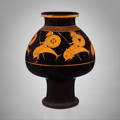
6. Warriors on dolphins depicted on a psykter (a cooler). Metropolitan Museum of Art, NYC.
On a final note (and in hopes you've been reading all of this in good spirits!). The modern word "symposium" refers to a conference or meeting to discuss a particular subject. The ancient word "symposion" however; referred to a drinking party (accompanied by lively conversation) and dolphins were definitely involved!
Wine was placed in a psykter (fig. 6) and let to float and chill in a larger container of cold water. as the cooler bobbed around the dolphins would rise and fall out of the water taking their warriors out to sea.
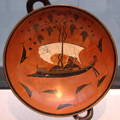
7. Dionysus (God of wine) sailing and surrounded by dolphins on a kylix (wine cup)
Maria Evangelatou is a Professor of Mediterranean Studies, Department of History of Art and Visual Culture, University of California Santa Cruz.
Our gratitude to Maria for her research and contributions to this page.

